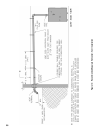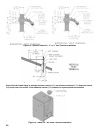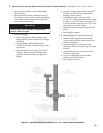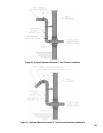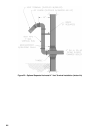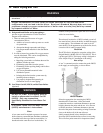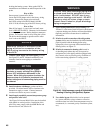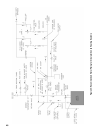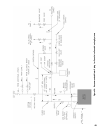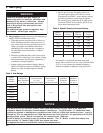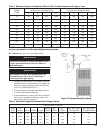
45
A. Design and install boiler and system piping to
prevent oxygen contamination of boiler water and
frequent water additions.
1. There are many possible causes of oxygen
contamination such as:
a. Addition of excessive make-up water as a result
of system leaks.
b. Absorption through open tanks and fi ttings.
c. Oxygen permeable materials in the distribution
system.
2. In order to insure long product life, oxygen sources
must be eliminated. This can be accomplished by
taking the following measures:
a. Repairing system leaks to eliminate the need for
addition of make-up water.
b. Eliminating open tanks from the system.
c. Eliminating and/or repairing fi ttings which allow
oxygen absorption.
d. Use of non-permeable materials in the
distribution system.
e. Isolating the boiler from the system water by
installing a heat exchanger.
f. Use properly designed and operating air
elimination devices in water piping.
B. Low Water Cut Off (LWCO) on Hot Water Boilers
(Optional)
GNINRAW
otseriwyrotcaftucotTPMETTATONOD
ffOtuCretaWwoLtekramretfanallatsni
snoitcennocesuylnO.)OCWL(
tuCretaWwoLrofdeifitnediyllacificeps
.ffO
ffOtuCretaWwoLehtwollof,sesacllanI
.snoitcurtsnis'rerutcafunam)OCWL(
When
A low water cutoff is required to protect a hot water
boiler when any connected heat distributor (radiation)
is installed below the top of the hot water boiler (i.e.
baseboard on the same fl oor level as the boiler). In
IV. Water Piping and Trim
addition, some jurisdictions require the use of a LWCO
with a hot water boiler.
Where
The universal location for a LWCO on both gas and oil
hot water boilers is above the boiler, in either the supply
or return piping. The minimum safe water level of a
water boiler is at the uppermost top of the boiler; that is,
it must be full of water to operate safely.
What Kind
The SCG boiler is designed to accept the wiring of the
Safgard Model 1100-H4 (P/N 45-1104) LWCO. This is
a probe type LWCO. The factory wiring is designed to
allow simple “Plug-in” installation of the wiring.
How to Pipe
A “tee” is commonly used to connect the probe LWCO
to the supply or return piping, as shown below.
GNINRAW
roreliobotegamaddnanoitareporeporpminitluseryamreliobepipylreporpoteruliaF
.erutcurts
reliobleetsdnanorifonoisorrocesuaclliwretawreliobfonoitanimatnocnegyxO
revoctonseodytnarraWdradnatSs'mahnruB.eruliafreliobotdaelnacdna,stnenopmoc
desuacpu-dliub)emil(elacsroretawreliobfonoitanimatnocnegyxoybdesuacsmelborp
.retawfonoitiddatneuqerfyb
LWCO Location
Select the appropriate size tee using the LWCO
manufacturer’s instructions. Often, the branch
connection must have a minimum diameter to prevent
bridging between the probe and the tee. Also, the run
of the tee must have a minimum diameter to prevent
the end of the probe from touching or being located too
close to the inside wall of the run of the tee.
Ideally, manual shutoff valves should be located
above the LWCO and the boiler to allow for servicing.
This will allow probe removal for inspection without




